Shibuya Tokyo is one of the most vibrant and exciting places to visit in Japan.
From shopping at bustling street markets, exploring ancient temples, sampling traditional local cuisine or simply taking a walk around its famous crossing; visitors will find plenty of things that make this area so special.

At Shibuya, you can experience some great nightlife spots such as the club district located off Dogenzaka Street, shop for fashion-forward trends along Takeshita Street, and explore cultural hubs like Koko Shrine which are filled with interesting stories about Japanese mythology.
During your stay here don’t forget to get an iconic selfie at Hachiko Statue or take part in various events hosted by local cafes throughout the year.
Whatever interests you have – there’s something for everyone in Shibuya.
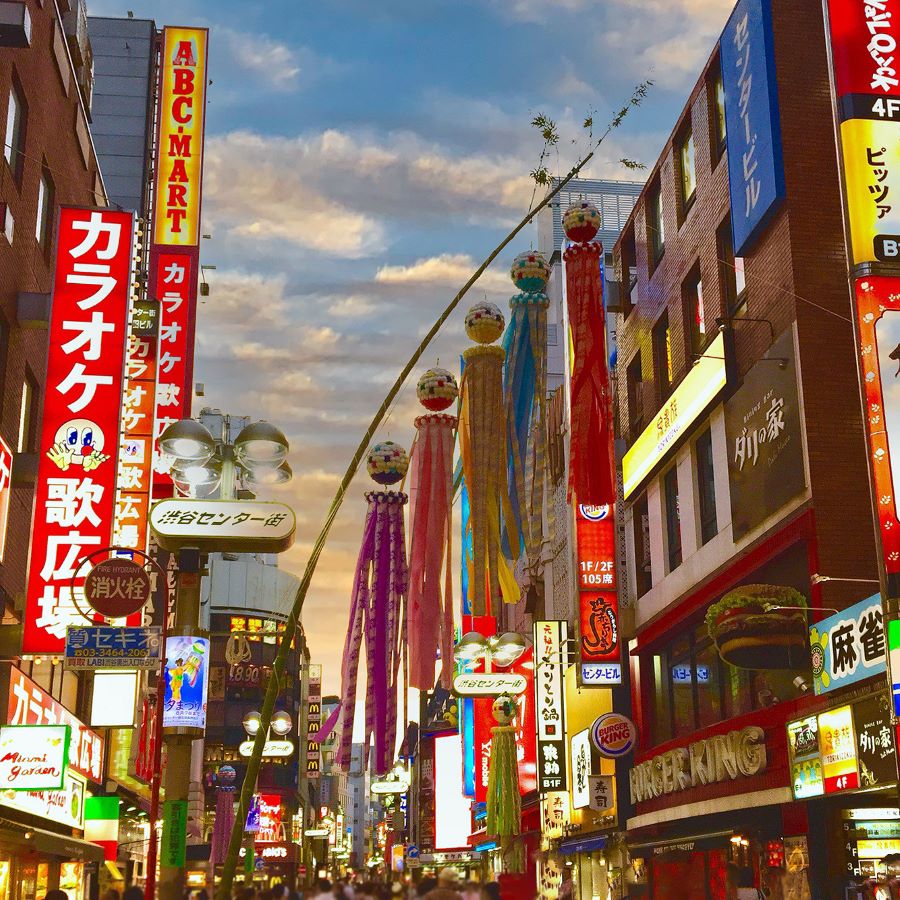
Shibuya Center-Street
Shibuya Center Gai, located in one of Tokyo’s most vibrant areas, is a bustling shopping district.
Here you’ll find stores ranging from boutiques to fast fashion trendy chains selling the latest styles and items for great bargains.
It’s also home to several cafes with delicious food and drinks – perfect for people watching over espresso on busy weekends.
The area has been known as “The Capital of Youth” since it first opened its doors back in 1979 – making it an integral part of Japanese pop culture history.
Shibuya SKY
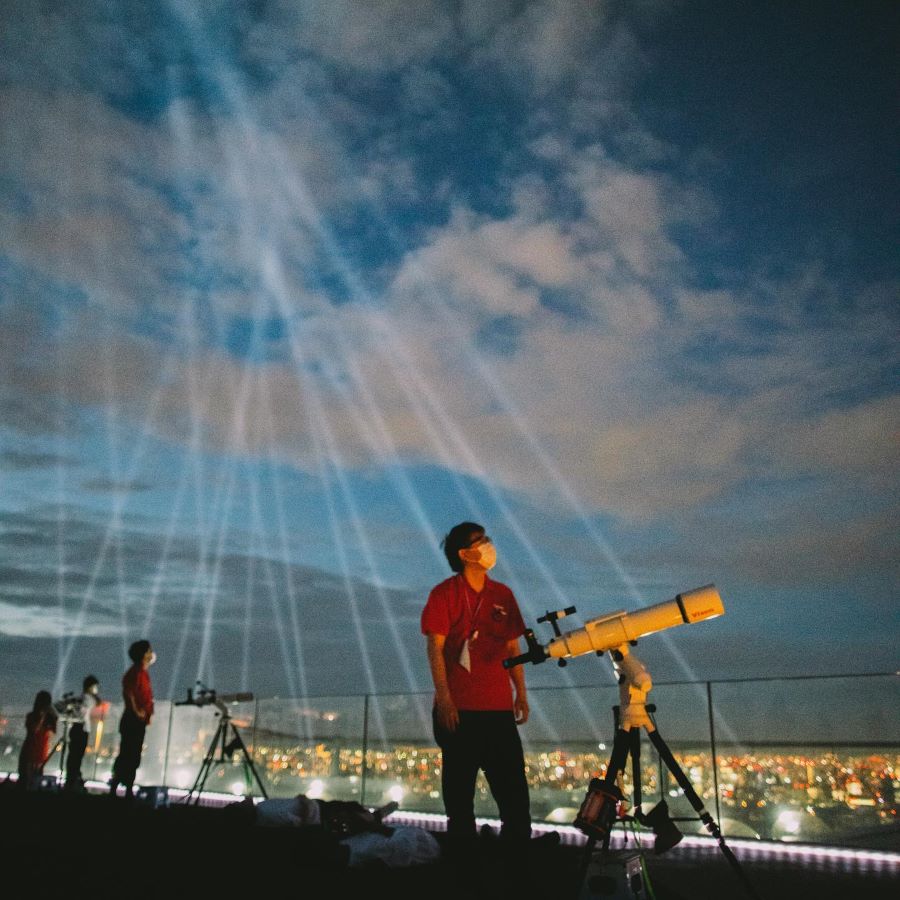
Experience Tokyo from a brand new perspective at the Shibuya SKY Observation Deck.
Located on top of “Shibuya Scramble Square,” one of the city’s largest skyscrapers, this observation deck offers stunning panoramic views of the entire metropolis.
From up here you will be able to see iconic landmarks like Mt.
Fuji and Tokyo Tower in addition to bustling shopping districts and vibrant nightlife scenes such as Roppongi Hills and Shinjuku Golden Gai.
On clear days, visitors can even get a glimpse into some neighboring prefectures like Yokohama or Chiba.
At nighttime, it is quite mesmerizing to see all these urban lights twinkling down below – definitely an unforgettable sight that should not be missed out on when visiting Japan’s capital city.
Shibuya Station
Sharing interesting facts and examples is a great way to spark curiosity, increase knowledge or even generate conversation.
For example, did you know that chocolate was once used as currency in Aztec society? It also makes for some fascinating dinner table discussions.
Other fun facts include the fact that honey never spoils – it can actually be thousands of years old and still taste delicious.
Examples could include telling someone about how blue whales can weigh up to 200 tons – more than 4 times heavier than an elephant.
This kind of information helps us better understand the world around us and may inspire others to learn more too.
Bunkamura
Bunkamura in Shibuya is a place like no other.
Famous for its street art and world-class shopping, it’s full of interesting attractions.
It has something for everyone: from the 6 story museum to theaters playing classic shows to underground clubs where live music can be heard late into the night.
You can also find local food stands that serve up traditional dishes such as ramen and sushi – perfect after a day wandering around being inspired by all there is too see here.
This destination really must be experienced firsthand, so come explore and discover Bunkamura today.
Konno Hachimangu Shrine
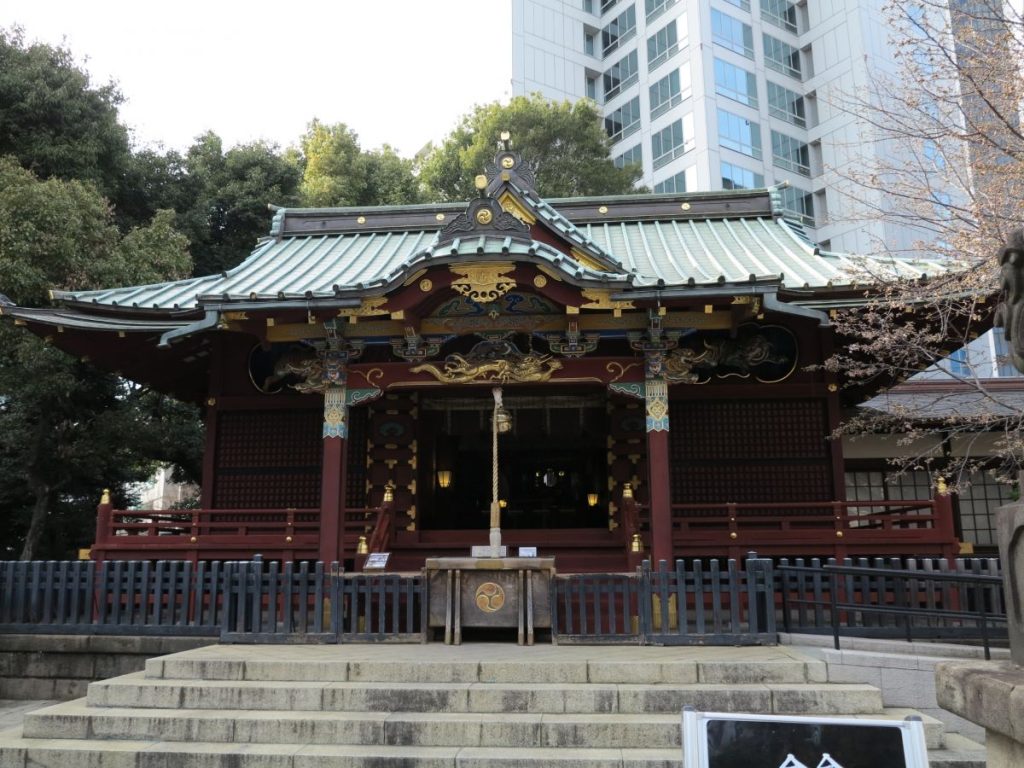
Providing interesting facts and examples is an exciting way to engage your audience, by giving them something they can easily connect with.
Whether it’s a novel point of view on the topic or creative illustrations that make complex concepts simple, adding value to their lives makes for compelling communication.
You could compile statistics from reliable sources, present quirky anecdotes from experts in the field or include fun trivia about relevant subjects; all these will help you keep your listeners enthralled.
Dogenzaka
Dogenzaka is a lively nightlife district in Tokyo, Japan.
It’s known for its bustling energy and numerous nightclubs, bars, and karaoke parlors that attract crowds of partygoers from across the city.
Dogenzaka is one of the best places to experience traditional Japanese culture with an electronic twist.
Here you’ll find everything from ramen restaurants to vintage stores as well as unique cultural experiences including J-Pop concerts and hip-hop performances throughout the year.
If you’re looking for something truly offbeat while visiting Tokyo make sure not to miss out on exploring all that Dogenzaka has to offer.
Yoyogi Hachimangu
Yoyogi Hachimangu is a Shinto shrine located in Tokyo, Japan.
The Shrine was founded by Emperor Go-Daigo in 1394 to pray for peace and wealth in the country.
It’s also renowned for its beautiful cherry blossoms that bloom during the spring season each year, drawing huge crowds from around Japan who come to enjoy their beauty.
An interesting fact about Yoyogi Hachimangu is that it enshrines two deities: Empress Jingu as its primary deity along with Taira no Masakado – both having strong military implications hence bringing good luck and protection when prayed at this Shrine.
Omotesando
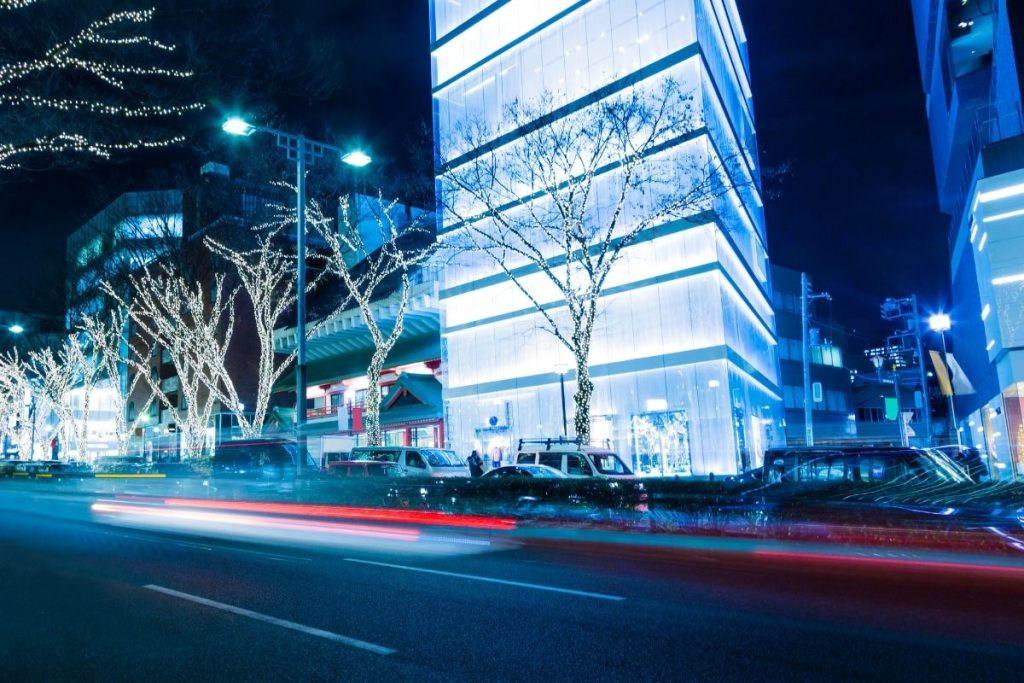
Omotesando is one of Tokyo’s trendiest shopping districts and it offers something for everyone.
This lively area has an amazing variety of stores, including chic boutiques to luxury brand flagship stores, cafes to take a break from your shopping haul, or restaurants serving delicious Japanese cuisine.
It also boasts some impressive architecture – think towering spirals and bright pop-colored facades.
Plus its well-kept tree-lined avenues make you feel like you’re strolling through a forest in the city center.
Omotesando truly stands out as both a fashion hot spot and a beautiful place to explore.
Shibuya Station
Shibuya Station is a major transportation hub that plays an important role in Tokyo’s daily life.
It operates 7 railway lines, including the Yamanote line and over 500 shops are located around Shibuya Station, making it one of Japan’s busiest locations for both tourists and locals alike.
Each day on average 2 million commuters pass through its gates – enough to fill about 20 football stadiums.
You can find some amazing restaurants near the station ranging from traditional Japanese cuisine to western-style fast food outlets It’s also home to iconic landmarks such as Hachiko Statue which commemorates loyalty between humans and their canine companions.
In addition, there is Scramble Crossing where you can admire up close thousands of people hurrying across eight directions during peak hours.
Thus if you’re ever in Shinjuku don’t forget check out what bustling Shibuya has hidden inside her walls
Takeshita Street

Takeshita Street is a unique and vibrant street in the heart of Tokyo.
Boasting its trendy fashion boutiques, quirky cafes, delicious crepes, and colorful kawaii culture, it’s an exciting place that offers something for everyone.
From vintage stores to food stalls with some of the trendiest dishes like rainbow colored cotton candy ice cream cones – you’re sure to find something interesting here no matter your style or taste.
Not only does this area have great shopping options but it also houses iconic landmarks such as Laforet Museum Harajuku which features everything from art exhibitions to creative workshops – making Takeshita Street one of Tokyo’s must-visit attractions.
Hachikō Memorial Statue
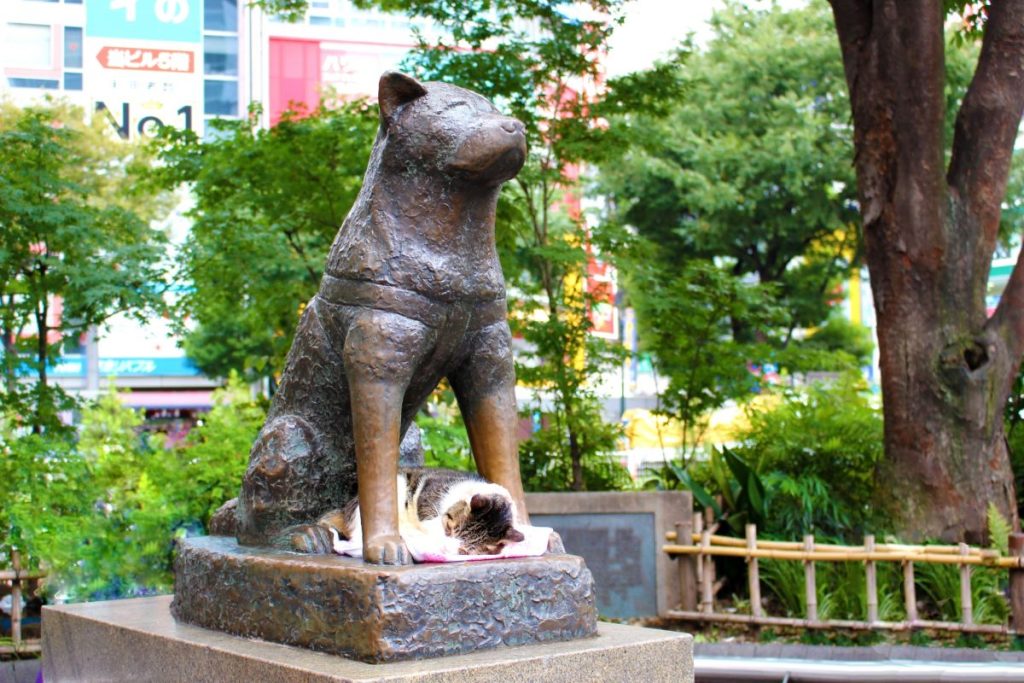
Hachikō Memorial Statue is one of the most iconic monuments in Japan – and for good reason.
Famous as a symbol of loyalty, this bronze statue honors Hachiko, an Akita dog who served his master faithfully until his death in 1935.
Even after that fateful day when his beloved owner never returned from work, Hachi stayed at the Shibuya station awaiting their reunion until he passed away nine years later.
This incredible story has been immortalized both by artist Teru émi’s famous sculpture outside Tokyo’s Shibuya Station and through various books, movies, and television shows throughout history.
It truly serves to remind us all about true loyalty against seemingly insurmountable odds – something we can all strive towards even today.
Shibuya Nonbei Yokocho
Shibuya Nonbei Yokocho, or “Drunkard’s Alley”, is a small alley in Tokyo where visitors can experience Japan’s ultimate ‘drinking culture’.
With narrow passageways and tiny bars stuffed with locals sipping on beer and sake, it makes for the perfect after-work outing.
It doesn’t cost much either – most drinks are around 500 yen each.
Whether you’re looking to grab some delicious yakitori skewers while drinking an Asahi Super Dry or just soak up the energy of one of Japan’s liveliest cities; Shibuya Nonbei Yokocho definitely won’t disappoint.
Nezu Museum
The Nezu Museum is a stunning hidden gem in the heart of Tokyo.
This incredible museum houses one of Japan’s largest collections of ancient artifacts, with more than 7500 items spanning 3 millennia.
From bronzes and ceramics to scrolls and sculptures, visitors can take an immersive journey through Japanese art history over seven floors.
The impressive Garden Plaza includes rare species that are native to different regions around Japan, making it a must-see spot for plant lovers as well.
As if this wasn’t enough already – every year from late April until early June visitors can witness hundreds of azaleas bloom across its beautiful grounds.
The Shoto Museum of Art
The Shoto Museum of Art in Shibuya is a contemporary art museum with an ambitious mission – to foster an appreciation for both culture and creativity worldwide.
Its wide-ranging collection features works from modern masters as well as emerging artists, expressed through mediums such as painting, sculpture, photography, and installations.
With dynamic rotating exhibitions that explore topics like Japanese identity, the environment, and technology’s impact on our lives; it’s no wonder why it has become one of Japan’s most beloved museums.
Not only does its vision stretch far beyond showcasing amazing artwork but they also fundraise money towards initiatives that strive to revitalize Tokyo neighborhoods while supporting local businesses.
Meiji Jingu Gaien
Meiji Jingu Gaien is a beautiful park complex in Tokyo, Japan.
It was built to commemorate the Meiji Emperor and Empress who ruled from 1868-1912.
The grounds are home to major attractions such as the National Stadium and Kasumigaoka Athletic Field, both of which were used for the 1964 Olympic Games opening ceremony.
Other highlights include lush gardens featuring 1,500 cherry trees that spread over 13 hectares; Yoyogi Park with its ponds, aquatic plants, and bird life; Nippon Budokan martial arts hall where renowned bands perform their concerts annually; Torii Gate designed by Japanese artist Kubota Beizen near Shinanomachi Station entrance – symbolizing protection against evil spirits entering shrine premises.
Furthermore every Sunday morning there’s an open market held in the nearby Harajuku district attracting locals as well tourists alike.
SHIBUYA 109
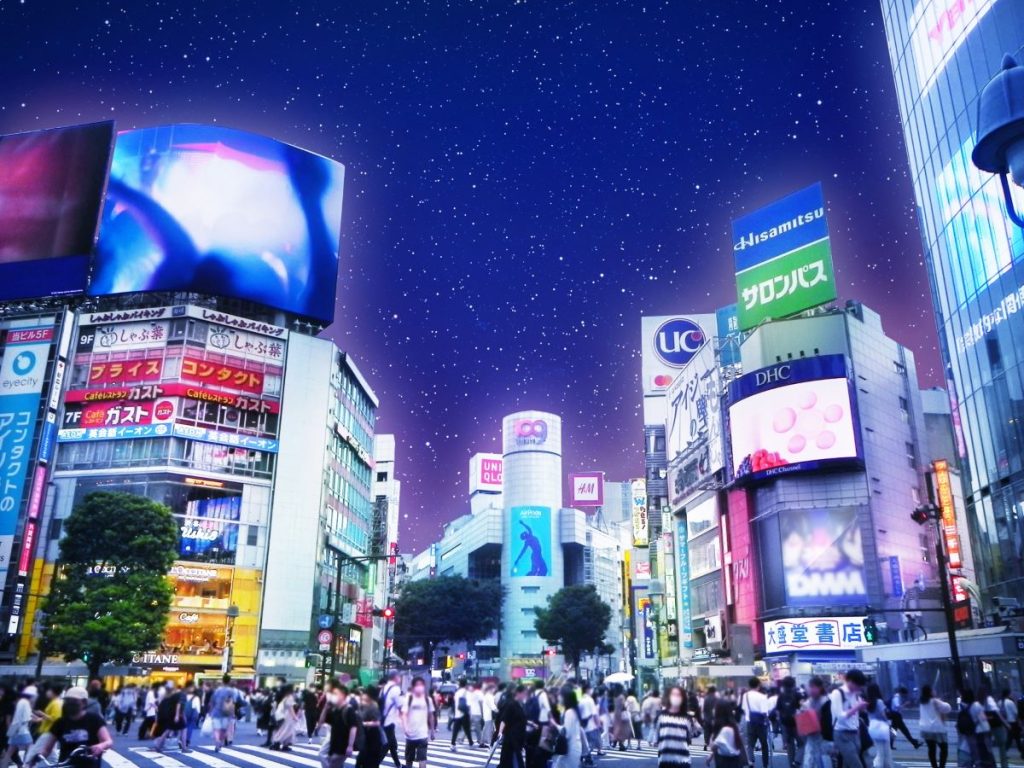
Shibuya 109, affectionately called “Maru-kyu” by locals, is a fashion mecca located in Tokyo and renowned worldwide.
It features seven levels of trendsetting stores with the latest styles from popular Japanese brands like Tally Weijl and kastane to indie labels like BRUNETTEtheLABEL.
The unique architecture creates an environment that serves as a playground for young adults looking to showcase their one-of-a-kind style through retail therapy or posing at its iconic entranceway named Scramble Crossing which has been featured in many movies over the years.
As if that weren’t enough it’s also home to Japan’s first-ever mall cat café where visitors can relax surrounded by felines while enjoying some coffee.
Shibuya 109 continues remain ahead of global trends setting new standards for creativity and making it clear why so many people flock here year after year – you’ll be sure to
Shibuya Crossing
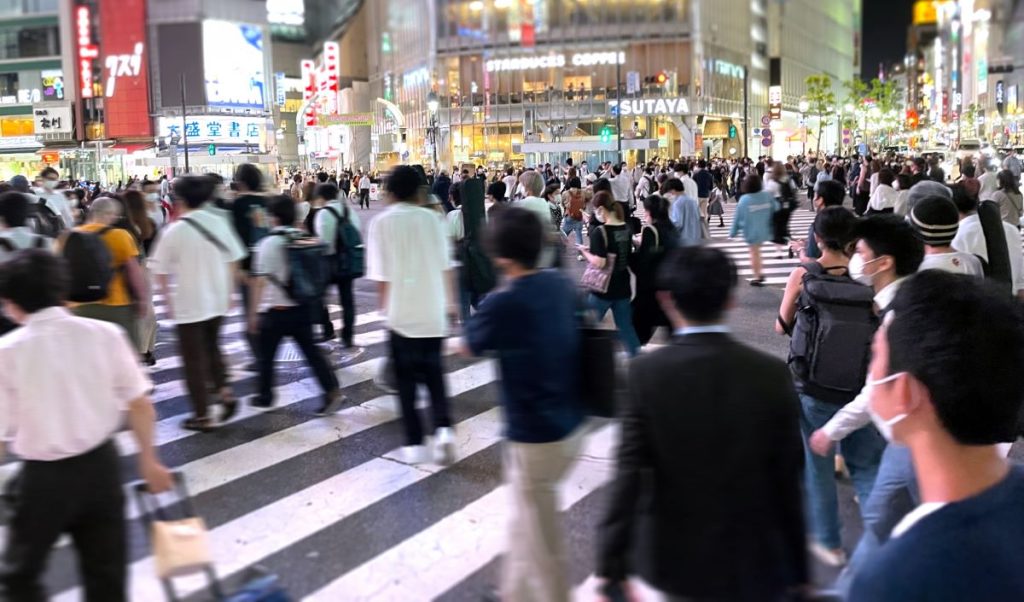
Shibuya Crossing is a world-renowned pedestrian scramble in Tokyo, Japan.
It’s one of the busiest intersections on earth with up to 2,500 pedestrians crossing at once.
The intersection features large screens on buildings and shops which add vibrant colors and energy to everyday city life.
As well as being an Instagram hotspot full of people taking selfies or documenting their trip it’s also home to Hachiko – the famous bronze statue of a dog loyal Akita who faithfully waited for his owner’s return nine years after his death.
He has become an icon associated with faithfulness and loyalty in Japan, making Shibuya Crossing even more iconic.
Cat Street In Harajuku
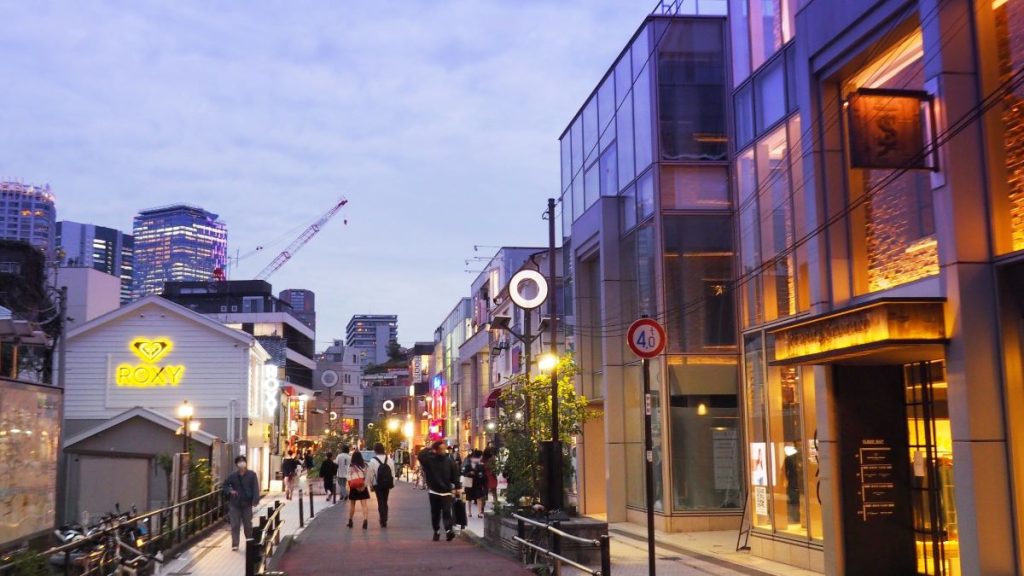
Cat Street in Harajuku is cool, quirky, and totally unique. This street will leave you wondering what kind of cats live there.
Here on Cat Street, you can find a huge range of cute clothing stores selling preppy items to anime-inspired outfits.
It’s also known for its selection of vintage treasures – if it looks like something that a cat might have been sleeping on, chances are they’ve got it here.
There’s plenty more too: music events, art galleries, cafes…you name it.
So why not come down and explore the magical world that is Cat Street? Who knows what sort fun things (and cats) await as soon as you arrive – so don’t miss out.
Is Shibuya worth visiting?
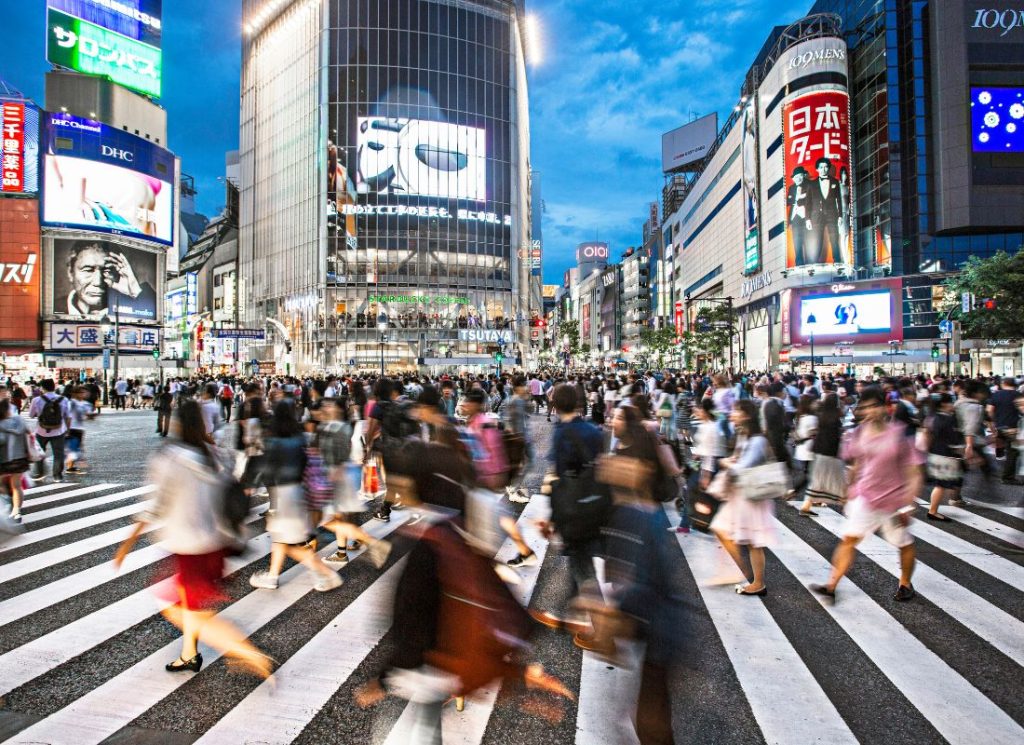
Shibuya is worth visiting for many reasons.
It’s one of Tokyo’s most vibrant and exciting districts, a hub of shopping, dining, entertainment, and nightlife.
You’ll find something to do no matter what time of day or night you visit.
From the iconic Shibuya Crossing intersection where thousands stream across each hour during peak times to exploring the numerous side streets filled with trendy cafes, luxury boutiques, and lively bars this neighborhood has it all.
Additionally, there are several sights associated with pop culture throughout Shibuya such as statues dedicated to famous manga characters making it an interesting spot for both locals and tourists alike.
Cosmo Planetarium Shibuya
Cosmo Planetarium Shibuya is a fascinating and out-of-this-world experience.
Using cutting-edge technology, it creates vivid starry projections on the dome-shaped ceiling.
Visitors can explore planets, galaxies, and deep space all in stunning 3D HD visuals – even learning about moon phases over Tokyo.
A perfect way to relax or become inspired by the universe around us; come be amazed at Cosmo Planetarium Shibuya.
Check Out Spain-zaka Slope
Spain-zakat Slope in Shibuya is one of Tokyo’s most unique attractions.
It has been featured as a backdrop for many films and TV shows due to its traditional Spanish architecture, cobblestone streets, and lively atmosphere.
On the slope sits several restaurants offering popular tapas dishes, specialty shops selling handmade leather goods or souvenirs from Spain, and even an indoor fountain of Romanesque statues—all providing visitors with a truly authentic experience.
For those who want to learn more about Spanish culture without going out of town can take part in flamenco classes offered at local studios near the hillside.
Museum of Yebisu Beer
The Museum of Yebisu Beer Shibuya is a fun and educational place to learn all about beer.
It offers interactive displays like trying out different beers, explaining how the drink was developed over time, as well as information on its production process.
Visitors can also find interesting facts such as why it’s called “Yebisu” – named after the Japanese god Ebisu who was associated with fishing and good fortune.
Not only does this museum provide an entertaining experience but you could take home some goodies too: souvenir bottles or coasters for example.
Take A Walk In Yoyogi Park
Yoyogi Park, located in the heart of Tokyo is a great spot to spend your day.
It features plenty of activities and entertainment for all ages – from exploring its large lush greenery with over 4500 trees consisting mainly of oak, camphor laurel, ginkgo, and cherry blossom varieties or taking it up a notch by catching some live Japanese music played on traditional instruments such as the shamisen at an outdoor stage during summer nights.
You can also enjoy sports like boating (rowboat hire available), and jogging tracks along with rock climbing walls throughout the park grounds.
Whether you are looking for peace & quiet time or seeking fun activities Yoyogi Park will provide just what you need For added convenience there’s free Wi-Fi access around most parts so keep connected while making memories here.
Explore Meiji Jingu
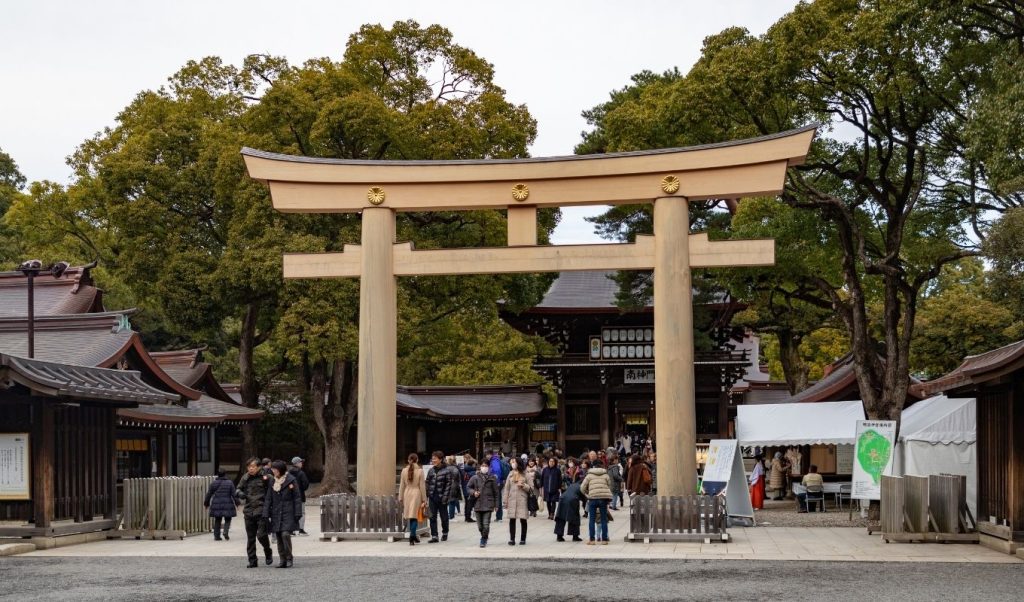
Meiji Jingu was founded by Emperor Meiji and his wife Empress Shoken to honor their souls.
The divine grounds of this temple are home to over 100,000 trees from more than 200 different species.
From cherry blossoms to pine trees – the vibrant colors make it one of the most popular places for hanami (flower viewing).
Not only does Meiji Jingu provide stunning views but also plenty of cultural activities like tea ceremonies and traditional festivals that happen throughout the year.
It’s even been part an Olympic torch relay celebration – it’s no wonder why so many people come here.
So if you’re ever planning a visit be sure to explore all that this powerful spot has to offer–from its peaceful atmosphere to beautiful nature scenes.
d47 SHOKUDO
The d47 SHOKUDO Shibuya is the perfect place to go for a delicious, affordable meal.
This Japanese eatery offers an array of sumptuous traditional dishes like ramen and udon, as well as more inventive options such as their Tonkotsu Spicy Cheese Ramen – a creamy concoction served with kimchi pork.
Plus they have non-Japanese offerings including homemade hamburger steak.
On top of that prices are incredibly reasonable; you can pick up most items on the menu for less than ¥1000 Yen ($9).
So if you’re ever looking for tasty eats without breaking your bank account head over to d47 SHOKUDO Shibuya – it won’t disappoint.
Explore Harajuku
Explore Harajuku is a vibrant and bustling district in Tokyo that has become synonymous with youth culture and fashion.
With its energetic atmosphere, cutting-edge street style trends, and unique boutiques selling clothing, shoes & accessories; it’s the perfect spot to discover up-and-coming Japanese styles.
Many popular musicians have also been influenced by such music groups as Kyary Pamyu Pamyu who got their start here.
What makes this area so special is its eclectic collection of cafes that offer themed menus like purikura (photo sticker) booths or animal cafés where customers can interact with animals while enjoying drinks.
There’s something for everyone here – from video game arcades to karaoke bars – making Explore Harajuku an unforgettable experience for any visitor.
How To Get To Shibuya

Shibuya Station is serviced by various train lines, directly connected to the JR East Yamanote Line and other trains such as Tokyo Metro’s Ginza/ Hanzomon Lines.
To get to Shibuya Station from any of these locations, board a train on the line you require until you reach your destination station or transfer point.
Once at that station or transfer point, follow the signs for Shibuya Station (渋谷駅).
From Shinjuku take approximately 15 minutes to use either local (JR Chūō-Sōbu) or rapid services (JR Saikyō & Sazanami limited express services).
From Roppongi It takes about 12 minutes with commuter rapid service from Tokyo Metro Hibiya Line; also less than 10 min ride via Keio Inokashira line from Shimokitazawa City district in a western direction toward Kichij
